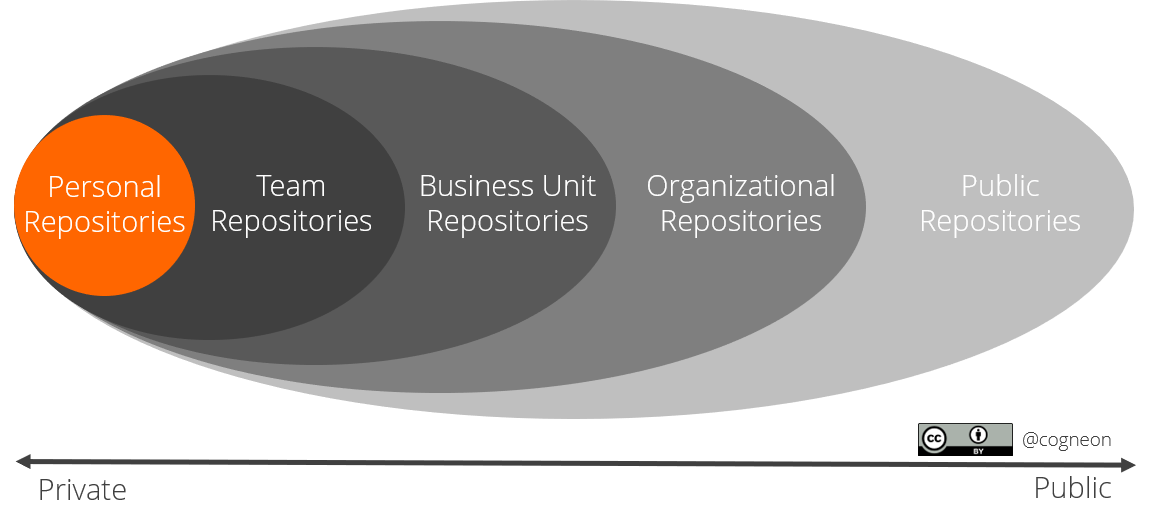If you talk to people about working in a more open and connected way and that there is a 12-week training programme called Working Out Loud by John Stepper (WOL Book) to learn the first steps you often hear phrases like “12 weeks? OMG that’s too long!”. But when people went through their first circle almost all of them are convinced that working in a networked way has a lot of advantages compared to working in a silo. Then the question comes up how to organize the personal open and connected work after WOL Circle 1. There are several activities under the label #WOLplus at the moment where people think about that. One of them is Holger Moller who wrote a blog post called WOLplus Circle – Eine Ideenskizze (in German) yesterday. In that blog he describes an idea how an agenda of a continued WOL Circle after the 12 weeks could look like. I am also working on a #WOLplus concept that I want to describe roughly in this post.
My Roots in Knowledge Management and Open Source
Since I come from the field of Knowledge Management, Learning Organizations and Lifelong Learning I am about to integrate principles of Working Out Loud in our approach to Personal Knowledge Management (PKM) called “lernOS Personal” which is based on ideas from Getting Things Done (GTD) and Objective Key Results (OKR). If you talk about Working Out Loud from the perspective of livelong learning it’s pretty natural that 12 weeks is not too long but after 12 weeks come another 12 and another and another … until you die. I am also a child of the Open Source Movement and I’m pretty much convinced that as much knowledge as possible should be openly accessible (metaphor: Standing on the shoulders of giants). In case you are not familiar with the open source approach I can recommend the documentation Revoution OS or the short clip What is Open Source explained in LEGO:
Disclaimer: I work on a lot of initiatives to push the idea of open knowledge forward, e.g. the Open First Manifesto, an initiative of the Innovationsbeirat. I took the image for this post from the manifesto.
Objective Key Results and Working Out Loud
In OKR you define objectives and work on them for a sprint which typically lasts for 3 month. For each objective key results are defined that describe how it looks like when the objectives are reached. OKR was created by Intel CEO Andy Grove and then brought to Google via investor John Doer. If you practice OKR full blown then OKRs are defined on company level, business unit level, team level and individual level. Since OKRs on all levels are public (at least within the company) they drive a very open and transparent work style and an agile way to implement strategic planning and execution. With the 3 month cycle you get goals for your working out loud practice which are connected to purpose and vision of the organization. Since people in WOL Circles often struggle with finding a good goal this comes with two advantages: 1.) you don’t have to think a lot about your WOL goal since it comes from OKR and 2.) your boss is pretty much in favour of WOL since it supports his OKRs. You can read about OKR at rework.withgoogle or in the book Radical Focus: Achieving Your Most Important Goals with Objectives and Key Results by Christina Wodtke and Marty Cargan.
Getting Things Done and Working Out Loud
Since I get introduced to GTD by David Allen (Book) as a method for self-organization of knowledge workers at the first Nuremberg Barcamp 2006 I am a big fan of the method and used it to develop our approach to personal knowledge management that we teach at the Cogneon Academy in Nuremberg. One element of GTD is the so called reference repository where you store information for later retrieval (similar to the Memex suggested by Vannevar Bush back in 1945). In times of social intranets and the Web 2.0 this reference repository is not a single repository like the locker of your desk but a collection of personal, semi-private and public repositories that you use. If you take Bryce Williams WOL-definition “Working Out Loud = Observable Work + Narratable Work” the question is which digital repositories you use to make your work observable (e.g. Slideshare, Sway, Dropbox, OneDrive, YouTube, Vimeo). With an Open Source Mindset you can always ask yourself: what do I have to offer (2nd exercise in WOL Circle week 5) that I can make more openly accessible. Try to move your knowledge assets from your personal repositories more and more towards the public repositories on the right:
Blog Carnival: What Do You Do after WOL Circle 1?
So much for my ideas on how to design a #wolplus approach. I will blog about it as soon as I have some documentation in place. Now I’m interested in how you organize your Working Out Loud process after WOL Circle 1. Are you doing Alumni Circles? Mastermind Groups? Regular Meetups? Just another Circle? Just post your answer in the comments below and spread the word about this little blog carnival via twitter:
[bctt tweet=”How do you sustain your Working Out Loud practice after WOL Circle 1? Be part of the #wolplus blog carnival an make your contribution. #wol” via=”no”]
Scholarch der Cogneon Akademie. Von der Ausbildung Dipl.-Ing. Elektrotechnik mit Schwerpunkt Digitale Nachrichtentechnik. Ich brenne für Lernende Organisationen, Wissensmanagement, New Work und Lebenslanges Lernen. Mitglied in Corporate Learning Community, Gesellschaft für Wissensmanagement, Chaos Computer Club uvm. Weiterer Podcast unter http://knowledge-on-air.de.

